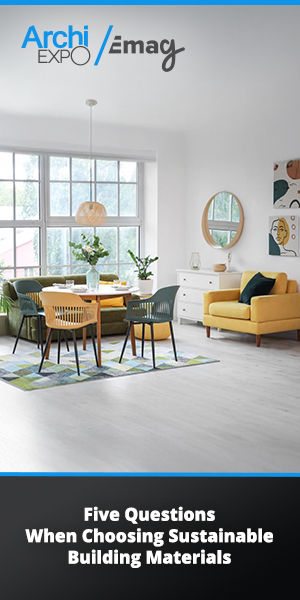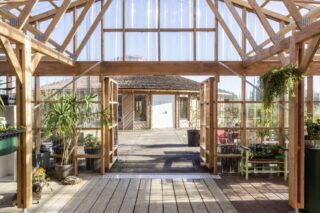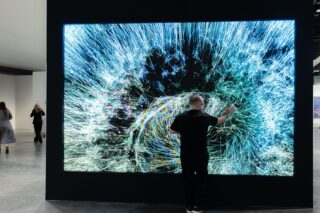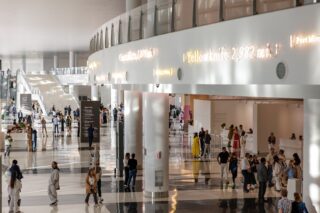Boutique Design New York (BDNY) showcased the latest in furnishings, lighting, and finishes for boutique hotels. About 100 new brands injected fresh perspectives emphasizing material innovation, customization, and circular design principles.
November 9 – 10, 2025—Boutique Design New York (BDNY), a premier trade fair for the boutique and lifestyle hospitality industry, returned to Manhattan’s Jacob Javits Center last week with a dynamic showcase of design innovation. The annual event brought together thousands of designers, architects, developers, and hoteliers exploring nearly 700 exhibits that spanned furniture, lighting, textiles, and bath and kitchen fixtures.
While established industry names presented their latest offerings, this year’s standout energy came from more than 100 emerging brands introducing experimental materials, modular concepts, and sustainable production methods. From robotic 3D printing and recycled composites to customizable lighting systems and eco-conscious surfaces, BDNY 2025 highlighted a clear shift in hospitality design toward adaptability, circularity, and tactile experience.
Faro Barcelona: A Circular Vision in Light and Form
Spanish lighting and ceiling fan manufacturer Faro Barcelona unveiled Tierra, Aire y Mar, a striking new collection by designer Héctor Serrano. Each piece in the series embodies the company’s commitment to sustainability and circular design, showcasing colored luminaire orbs crafted from recycled materials using an advanced robotic 3D printing process.
The three designs—Tierra, Aire, and Mar—draw their identity from both their material origins and their earthy color palettes. Tierra, a light brown orb made from a biodegradable bioplastic composed of cellulose and PLA, evokes natural warmth. Mar, rendered in aqua green, incorporates 70–75 percent recycled fishnets, turning marine waste into refined design. Finally, Aire, a translucent sphere made from recycled PETG buttons, demonstrates how recycled plastics can be infinitely reprocessed without compromising quality.
- TIERRA – 3D-printed using a bioplastic blend of PLA and cellulose, both biodegradable and plant-based, Tierra features hive-like structures that reference pollination as the lifeblood of biodiversity. Its random, paper-like texture evokes terracotta and handmade surfaces, contrasting digital precision with craft-like warmth.
- MAR – Made with a polypropylene composite sourced from 73-75% recycled fishing nets, Mar draws inspiration from sea urchins and marine forms. Its sea urchin-inspired forms link the object to its material origin, transforming ocean waste into durable, emotionally resonant design.
- AIRE – Constructed from 100% recycled PETG, the most widely recyclable plastic, Aire features bubble-like volumes only achievable through additive manufacturing. Lightweight yet durable, the model illustrates the material’s potential for infinite reuse, both in concept and in function.
“Our goal is not just to make sustainable products,” said Faro Barcelona CEO Xavi Martin, “but to advance circularity by experimenting with new materials that inspire both design and environmental responsibility.”
Lib and Co.: Sculptural Flexibility and the Art of Customization
Canadian lighting brand Lib and Co. made an impression with its sculptural chandeliers that blend artisanal craftsmanship with technical flexibility. The standout Bellissima chandelier features an illuminated braided rope adorned with handblown glass droplets and crystals, each unique in shape, color, and size. The modular design allows for various configurations—draped vertically for dramatic effect or swagged horizontally for a more traditional presentation.
Customization is at the heart of Lib and Co.’s design philosophy. The company’s Pisa collection, for example, pairs looping dark metal frames flecked with gold with handcrafted glass petal bulb covers, creating a luminous, cohesive aesthetic. A proprietary “plug and play” jack system allows designers or end users to easily replace LED modules or reconfigure the fixture’s form, reducing waste and extending product life.
“We want our clients to feel ownership over their lighting,” said Sales Manager Silvio Zitoli. “Our fixtures are built to evolve with their spaces.”
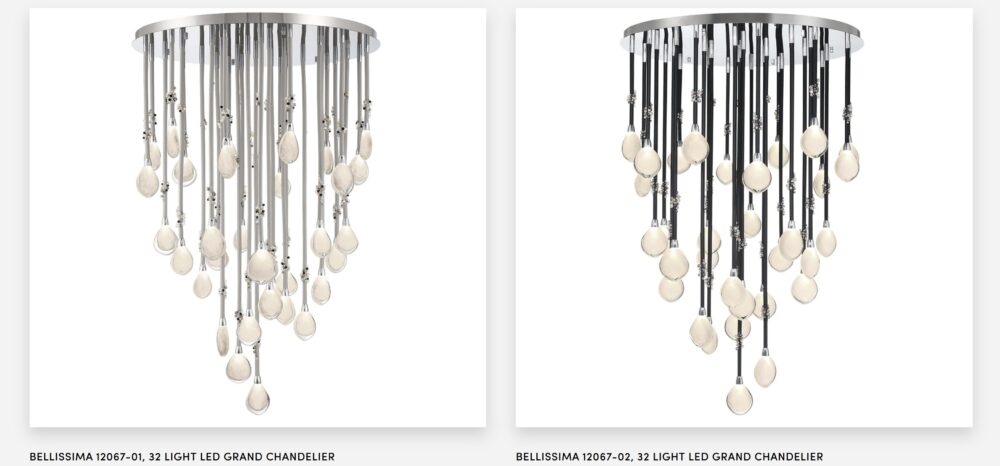
Agio Hospitality: Reinventing Outdoor Design with Resysta
Taiwan-based Agio Hospitality showcased the potential of Resysta, an innovative material made from rice husks, rock salts, and mineral oil that mimics the look and feel of natural wood. Despite its organic appearance, Resysta outperforms traditional timber in durability—it’s waterproof, UV-resistant, mold-proof, and 100 percent recyclable.
At the booth, designer Martin De Blois demonstrated Resysta’s versatility by sawing, bending, and shaping it live on the show floor.
“You can work it like wood,” he explained, “but also mold it like plastic.”
The company displayed a range of embossed samples replicating different wood grains and textures, highlighting the material’s ability to deliver both aesthetic warmth and technical resilience.
“For us, touch is everything,” said De Blois. “Design should not only be seen but felt—and Resysta offers that organic, tactile connection while meeting modern sustainability demands.”

A New Era of Sustainable Sophistication
From Faro Barcelona’s circular lighting to Lib and Co.’s modular chandeliers and Agio’s bio-based materials, BDNY 2025 made one thing clear: the boutique hospitality sector is redefining luxury through innovation, flexibility, and environmental consciousness. The fair’s most compelling work wasn’t about trend-following, but about reshaping how materials, technology, and craft can coalesce into more meaningful, enduring design experiences.


